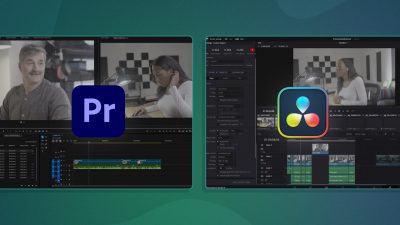It’s one of those days. Everything is going wrong – products are failing, websites are crashing, and customers are grumbling. Worse, they’re posting about it online for the world to see!
Before things get out of hand, you need to start engaging with your customers in a helpful and meaningful way. That’s where video comes in.
Video can be a powerful tool to respond to your audience in a time of crisis. However, there are several keys to getting it right. From employing empathy, to adding value, and showing rather than telling, here’s our guide to fighting fires with online video.
Why It Works
Compared to other mediums, video allows you to convey more emotions more effectively. People can see and hear how you deliver your message. That’s particularly powerful when empathy really counts.
For instance, it’s one thing to write, “We are sorry for this issue.” It’s quite another to record a short video to a customer apologizing to them directly. It feels more personal, because it is.
Written responses, although concise and easier to produce, tend to feel scripted and automated. This can leave your online community feeling like they’ve been given a “stock response” rather than a genuine interaction.
In this case, it’s ok if the video isn’t totally polished. It’s ok if the camera angle is a little off. What’s most important is that you really mean what you say.
It’s unexpected.
Although nearly all companies leverage video for marketing, far fewer use it as a tool for addressing customer problems or concerns. Video responses will help your brand stand out. If done strategically and authentically, you will surprise and delight your audience.
It’s responsive & timely.
Speedy customer responses show you’re listening and eager to engage with your online community. If you’re able to share authentic and professional video replies quickly and efficiently, you might even be able to get ahead of the game.
Chances are, others are skimming the complaints, but not reading your replies to each one. Video stands out and helps draw attention to your message. People are more likely to be impressed by your attention to issues and your dedication to helping individuals.
When You Should Use It
It’s true that you don’t always need to make a video in response to every customer issue. You’d be overwhelmed, and customers would disengage.
In order to keep the video responses feeling authentic, it’s important to pick and choose the perfect situations to use them. Before you hit record, ask yourself, “How does this add value to the viewer?”
Your video should provide information that can’t be easily conveyed with the written word. It should show, and not just tell, the story of what went wrong, and how you’re going to fix it. It should leave the viewer feeling positive, friendly, and upbeat, even if things are not going well currently.
Here are some general situations where you might find video is your best not-so-secret weapon.
As a PR crisis tool.
Some things are unpredictable. Mistakes happen, and problems can occur with the services or goods your company is providing.
Whether it is out of your control or a genuine error doesn’t really matter. The key is that your customers are very unhappy.
Producing a video response is a succinct and professional way of delivering a useful explanation for the problem, and your plan of action to solve it. You may still want to cite specific complaints in order to address them individually, and be sure to provide honest and genuine apologies for the disrupted service.
As a thank you.
Not all fires are bad. Sometimes, positive messages about your company or brand spread rapidly online, and you need to jump in and participate in the conversation.
For instance, short, snappy video content can be an effective way to respond to social media posts. Perhaps an online personality or influencer has mentioned your products or services. A video response from your brand can tap into the excitement, and help engage their followers.
You could even use the video to encourage the influencer to be in touch via direct message. That way, you can send them some free swag, or discuss sponsorships, giveaways, or even affiliate programs they might be interested in.
Of course, not only the “internet famous” will be talking about your products. All platforms allow for consumers to post their own thoughts and experiences.
If you spot someone using your products in a novel or interesting way, make a short video to engage with them. All you need is a quick video to say “Hey, ABC, that’s awesome! Thanks for sharing!”
This type of video will help fuel the excitement and discussion, and increase the community’s engagement with your brand. Bonus points if your video features someone from the company they’ll recognize – like the CEO or an employee with name recognition in the community.
As a mode of clarification.
See some confusion or disagreement in a lengthy online discussion? Jump in with a quick and clear video to clarify the details and thank everyone for being part of such a passionate community. It is especially important to make sure that the video is first and foremost appreciative of the community, and isn’t singling anyone out. Just make sure your intervention helps to quell the fire, not fuel it!
This could also be used as an opportunity to quickly demonstrate a product if the confusion lies in how to best use it. Or, suggest alternative uses of the product. This is then not only an effective response, but a resource your customers can return to again and again for information.
Where to Use It
The best place to leverage video really depends on where your audience is most active, and your goal for sharing your video. You may even find a multi-pronged approach is necessary.
For example, if your audience is primarily posting about you on social media, quick video responses to individuals might be merited. Or, you can leverage tools specific to each platform, like Instagram’s question feature, or Facebook’s live streaming.
However, if you’re facing a larger crisis, your company blog might be the best place to release a more in-depth video. Then, use social media posts to direct traffic to your blog to ensure it reaches the right people.
Using the Power of Video Successfully
Different circumstances require different approaches to the video content being deployed. Here’s a breakdown of how to create several types of videos that you may need to fight fires online.
Short, snappy response style:
If you’re looking to post a quick response, whether on Twitter, Instagram, or your company blog, you don’t need much. Just find an interesting backdrop and (if you’re not doing the talking yourself) someone happy and willing to chat into a camera.
For this, production time is likely to be mere seconds. As for equipment, all you need is a phone or tablet with a front-facing camera, and a smile.
Try not to be too scripted or repetitive. However, writing out key points to cover will help ensure you don’t leave anything out.
Also, accuracy is key. You only have a few seconds, so be sure everything you are saying will help solve problems for your customers, and won’t cause any additional headaches.
Gary Vee: Valuable audience engagement
For an illustrative example of this type of video, meet Gary Vaynerchuck (@GaryVee). He’s a notorious online personality and entrepreneur. He is best known for his work in digital marketing and social media, and has published five books about entrepreneurship and social media strategy.
Gary Vee also chronicles his life on his YouTube channel with a massive 1.5 million subscribers. Whether you love him or hate him, he knows how to create an audience and keep them interested, so it’s worth paying attention.
How he’s using video
Gary Vee has been using video to respond to individual members of his community since Twitter introduced the option to post short videos around four years ago. In a blog post titled “Why Twitter’s new video feature matters for engagement, not just content,” he details the ways in which he uses Twitter videos to respond to his audience, and why these interactions are valuable. A video, for instance, is much more visual and personal without adding too much more time or effort on his part.
“It takes me nine to twelve seconds to make a video and reply, but those extra seconds hold a lot of meaning.”
These interactions are invaluable to us as the audience. It feels exciting when a celebrity, company, or influencer we admire likes a Tweet or responds to a comment we’ve posted.
To receive a video with that person speaking directly to us is much more intimate and direct. As a result, the individual has a more authentic and memorable interaction and comes away with a positive association. In comparison, a quick text response can be easily misconstrued.
Larger-scale, professional video:
For larger projects (perhaps PR apologies or big-gesture thank you’s) it might be wise to spend more time planning and scripting so that nothing important gets left out along the way.
- Try storyboarding the video so you know what needs to be shot and you or your editor has a guide to follow in post-production. This way, you can assess details such as shooting locations and projected run-time before the cameras start rolling. We have a useful guide about how and why you should storyboard videos that you can check out here.
- Script the video. This is particularly vital if you’re using video to apologize during a PR crisis. Scripting helps ensure nothing gets omitted or potentially misunderstood.
- Cast the video. You needn’t hold full-scale auditions, but it’s important to make sure your audience is seeing someone relatable. They’ll be much more likely to listen and respond. For apology-type videos, it would be suitable to have the CEO, or someone of similar status, so the community understands the video is serious and genuine. For something more lighthearted, you can be more creative.
- Go for a little more polish. You don’t need to put on a full Hollywood production. Make sure the lighting is flattering, the audio is clear, and the backdrop isn’t too busy. Keep it simple, and focus on your message.
Using video to respond to your customers and online community is a thoughtful and often unexpected form of engagement. When done well, it’s sure to leave a lasting positive impression for the individual. Whether to answer quick-fire questions, or to make a formal announcement or apology, a well-produced video will help you impress your consumers, and stand out against competitors online!








